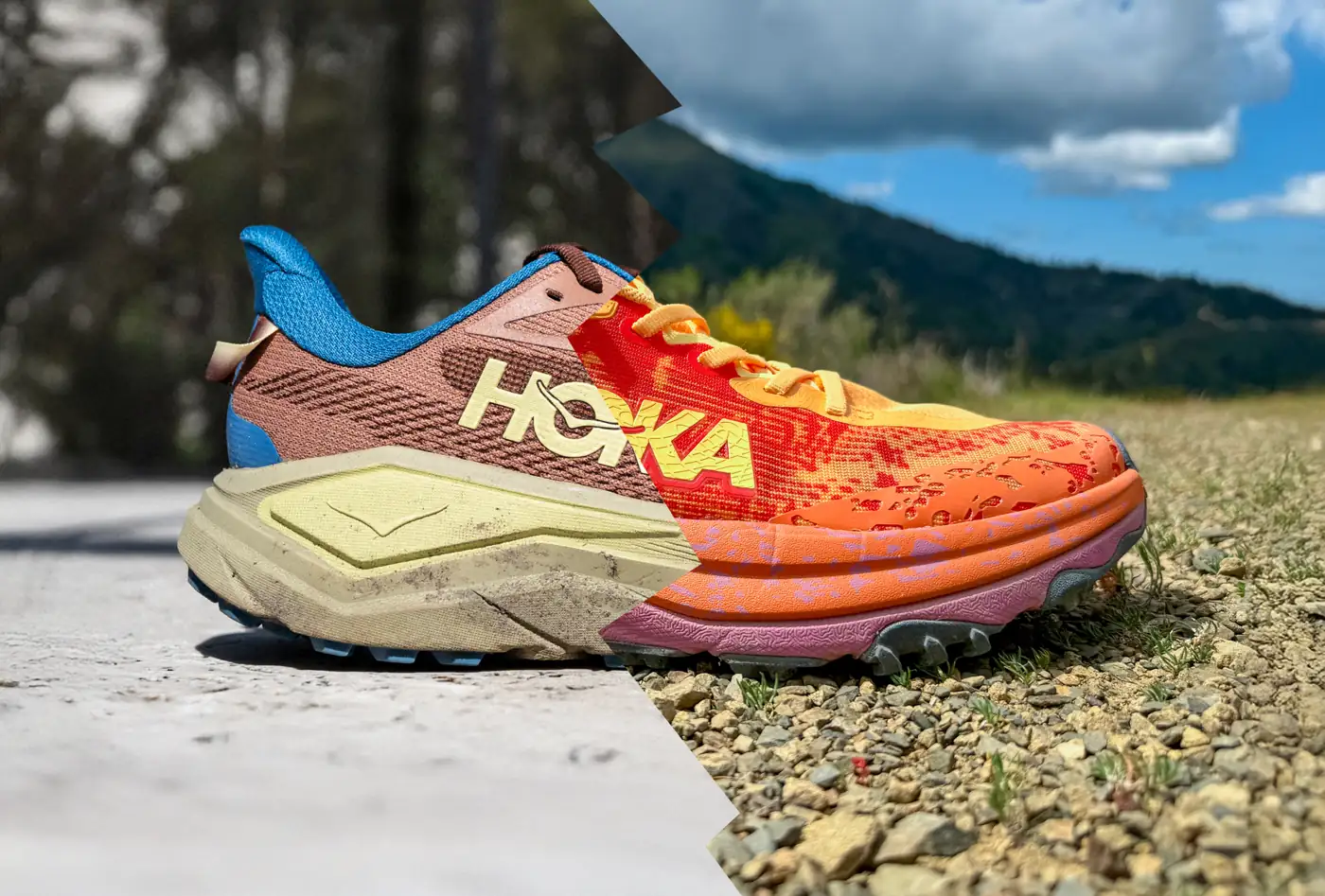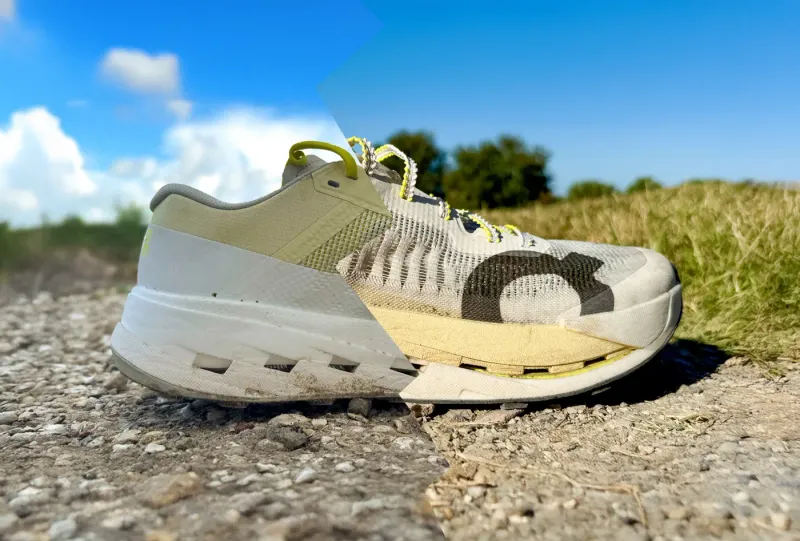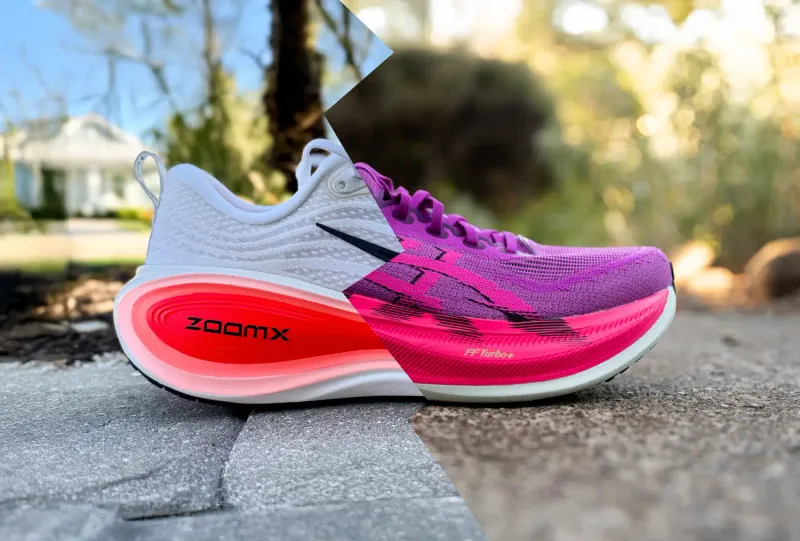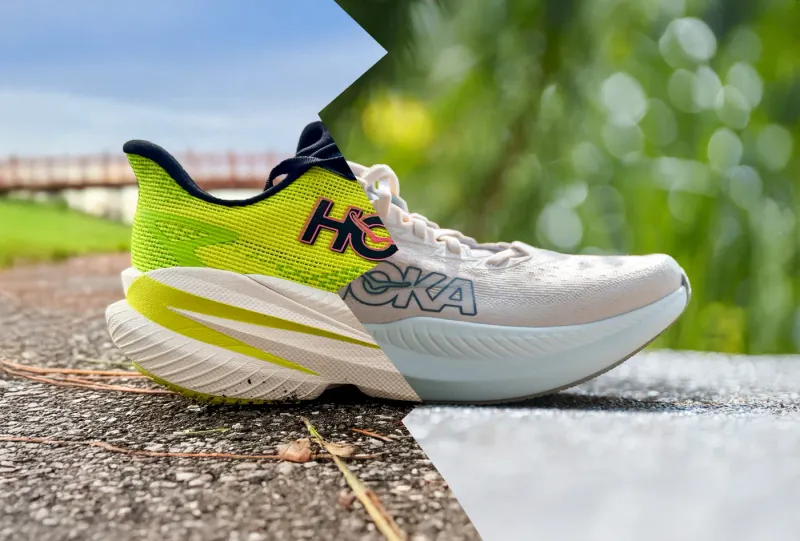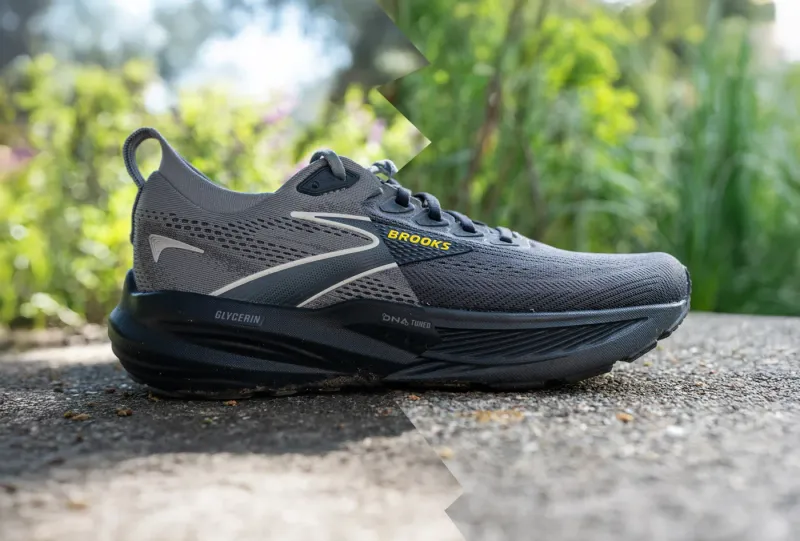If you're deciding between the Hoka Speedgoat 6 and the Hoka Challenger 8, it really comes down to one question (among a few fit concerns): where do you run most?
Both shoes are trail-ready, but one is built for mountain missions and technical terrain, while the other shines on light trails, fire roads, and pavement-to-dirt transitions.
I’ve put serious miles into both, racing ultras in the Speedgoat 6 and logging everyday runs and hikes in the Challenger 8; here’s how they compare and which one might suit you best.
Key specifications
| Feature | Speedgoat 6 | Challenger 8 |
|---|---|---|
| Price | $155 | $155 |
| Weight (US M9) | 9.4oz (266g) | 9.5oz (269g) |
| Drop / Stack | 5mm (40mm heel / 35mm toe) | 7mm (approx. 31mm heel / 24mm toe, est.) |
| Upper | Woven textile, snug fit | rPET mesh, plush collar, better breathability |
| Midsole | Responsive CMEVA foam | Soft compression-molded EVA |
| Outsole | Vibram Megagrip, 5mm lugs | Durabrasion rubber, 4mm lugs |
| Best for | All-terrain, mountain trail running | Hybrid road-to-trail running |
Sizing and fit
Both shoes fit well, but quite differently; getting the right size for your foot shape is crucial with the Speedgoat:
- Speedgoat 6 runs a bit small due to its snug woven upper with an angular toe box. I recommend sizing up half a size if you're between sizes or wearing thicker socks OR, if you know you have wide feet, go with the wide version.
- Challenger 8 fits true to size with more room in the forefoot and plush padding around the heel and tongue. It's more accommodating and comes in a wide version like the Speedgoat.
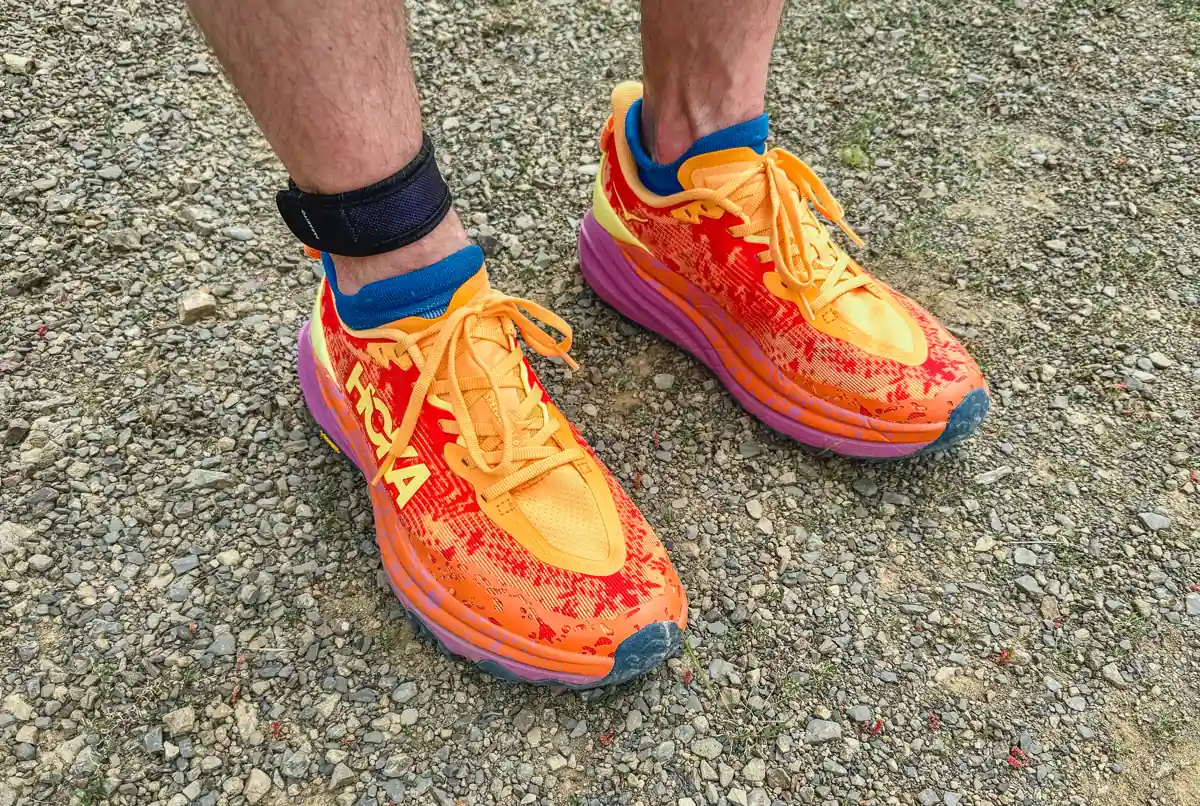
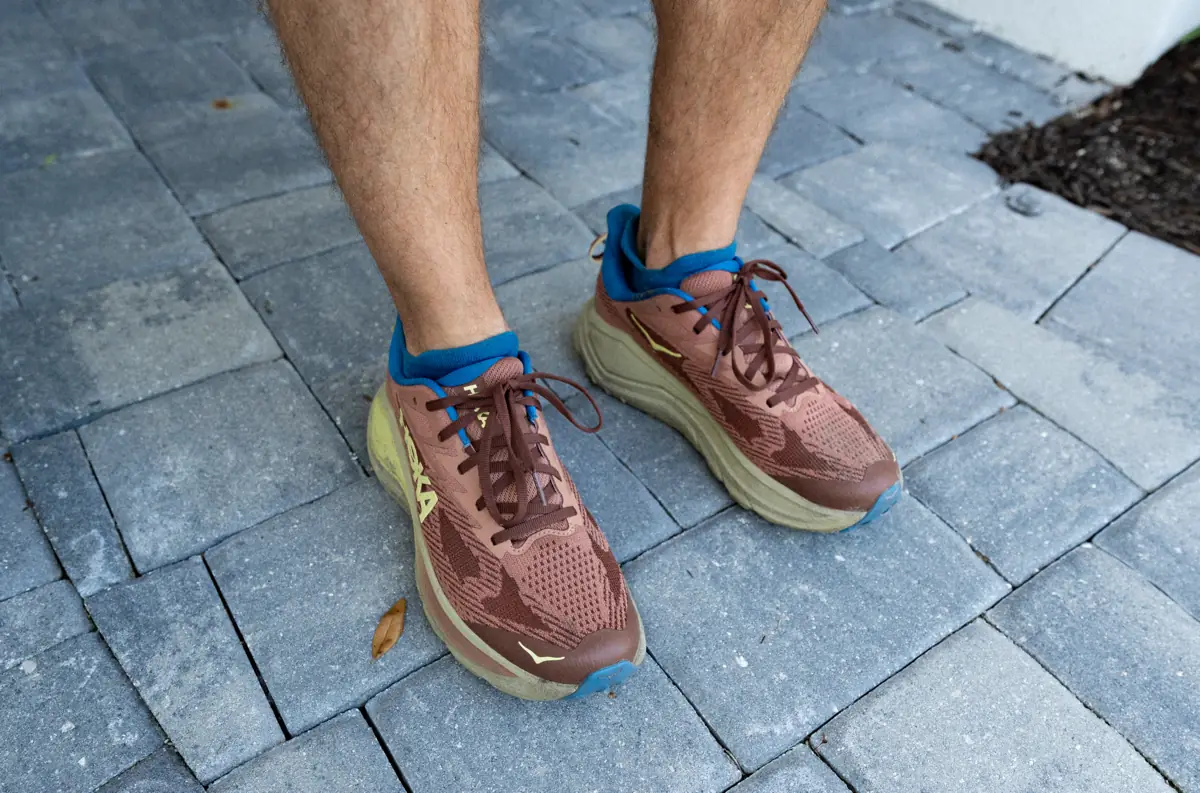
If you’re looking for a locked-in fit for technical trails, the Speedgoat’s tighter upper delivers. For comfort and versatility, the Challenger 8 wins on first-step feel and beyond.
Performance comparison
Terrain and grip

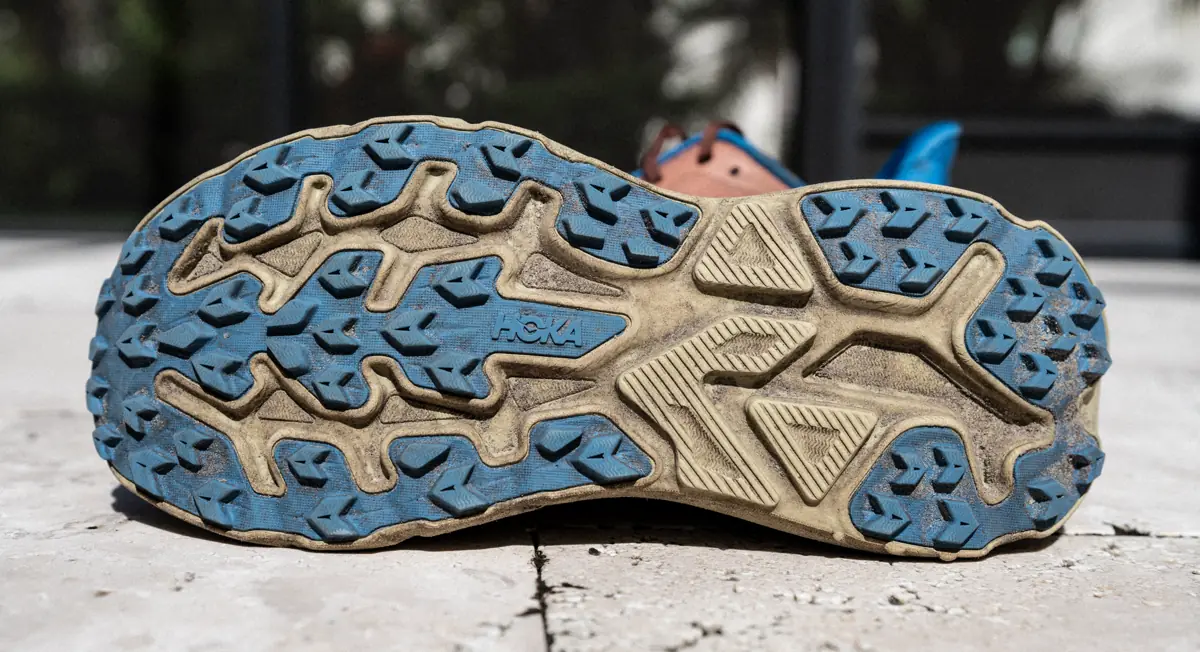
- The Speedgoat 6 is hands-down the better shoe for technical terrain, steep climbs, rocky trails, and wet or muddy descents. The Vibram Megagrip outsole with 5mm lugs is aggressive and dependable.
- The Challenger 8 is best for non-technical trails, gravel paths, and even road segments. Its 4mm lugs made with Durabrasion rubber provide solid grip in most dry conditions, but they’re not made for wet slick rock or muddy descents.
If you’re going to be off the beaten path; think roots, rocks, or ultras, then the Speedgoat is the one. If your routes blend park trails, dirt paths, and the occasional road mile, the Challenger 8 is more than enough.
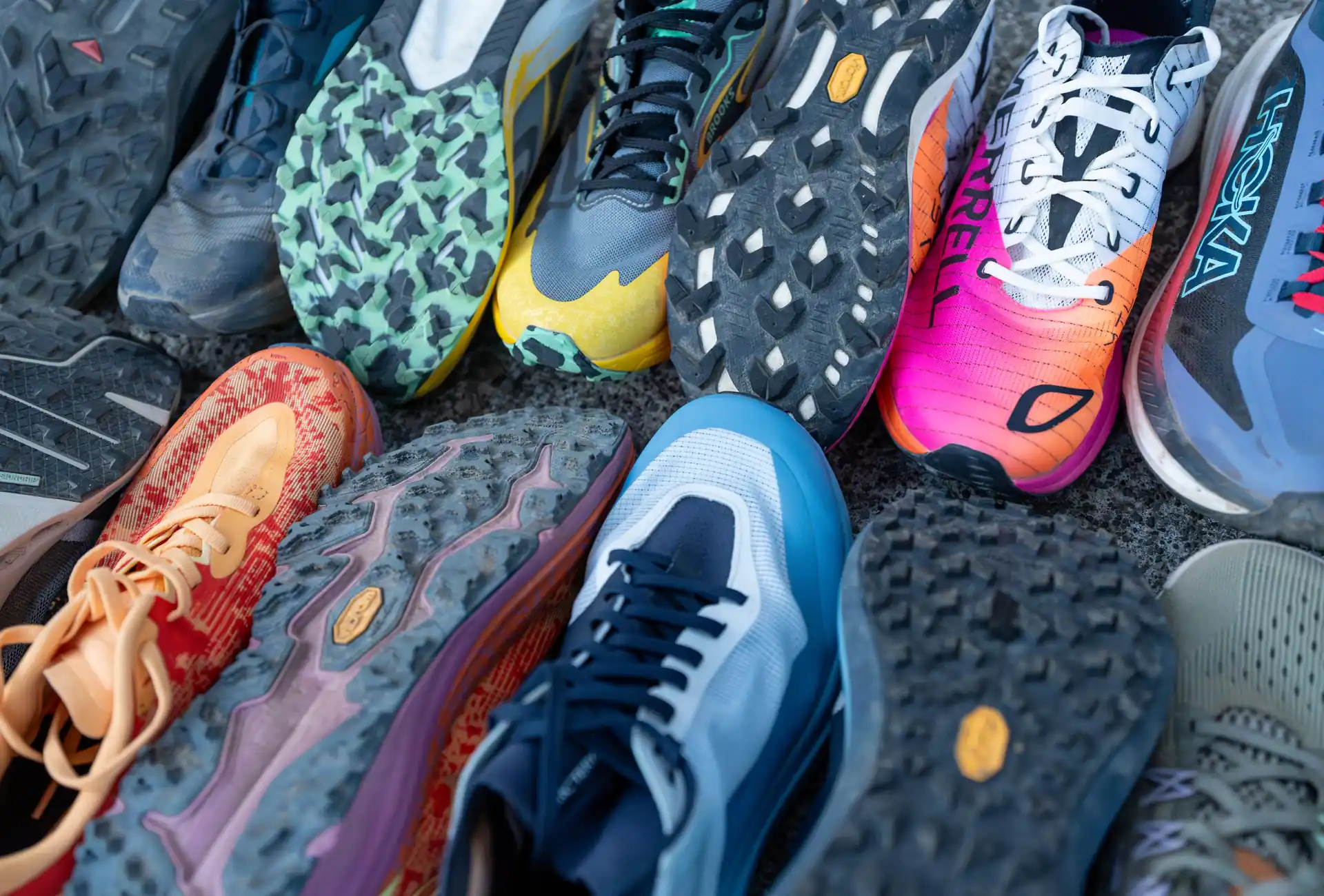
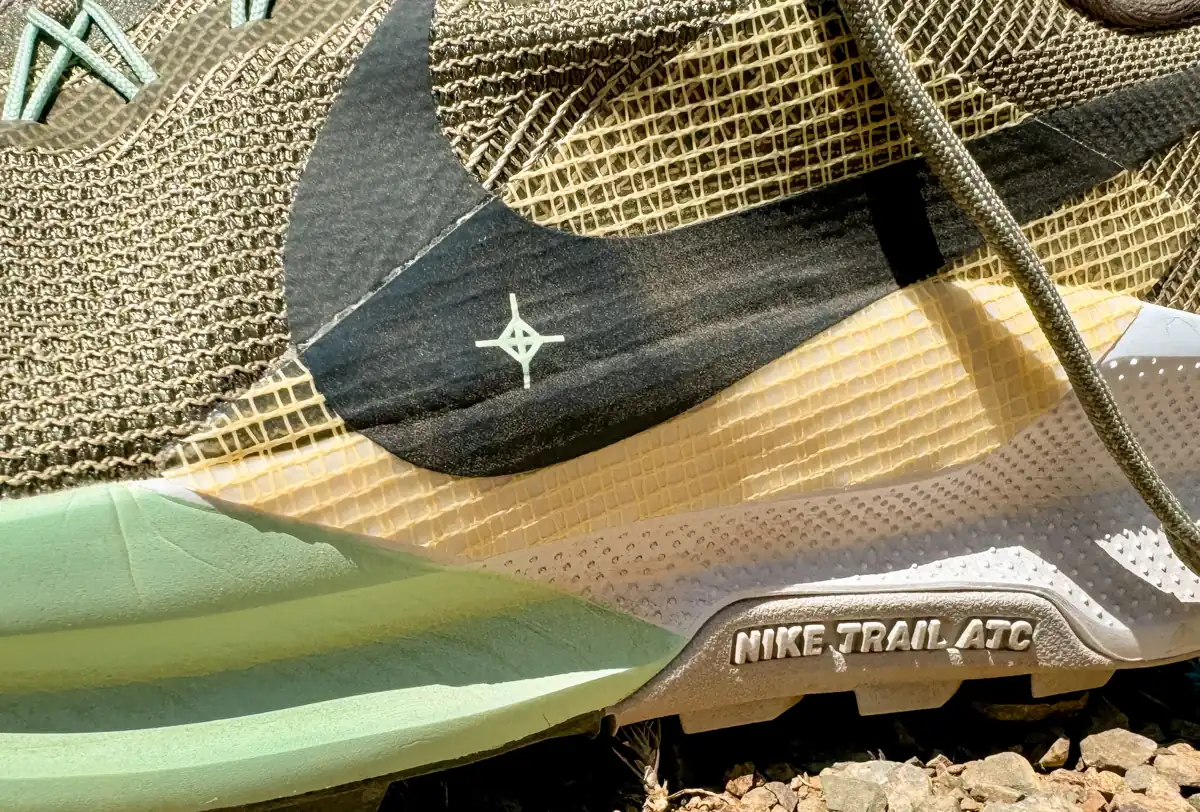
Ride and cushioning
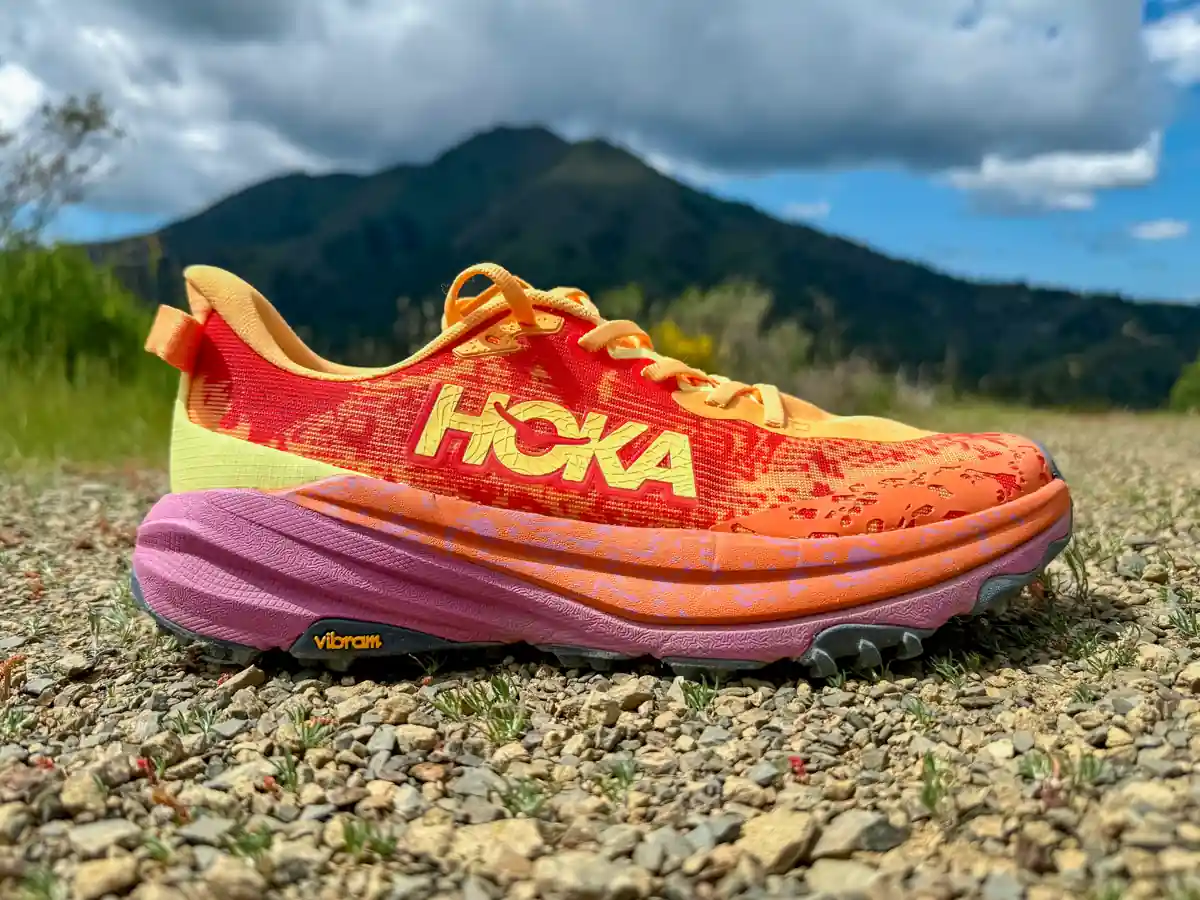
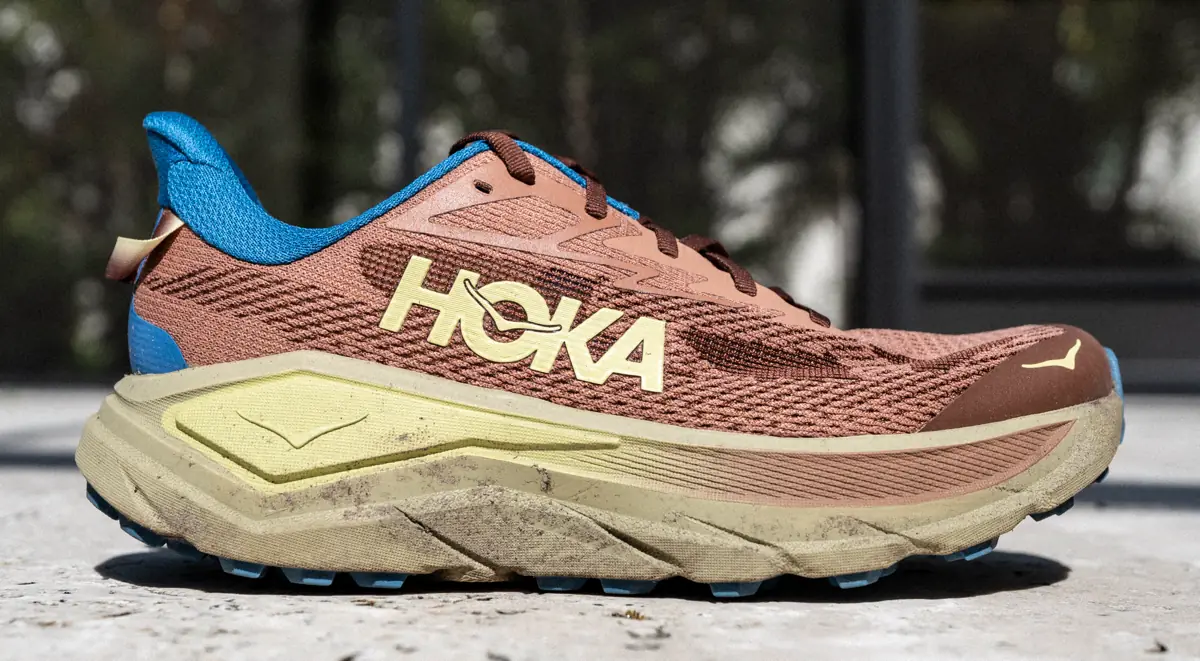
- The Speedgoat 6 feels more responsive thanks to the updated CMEVA foam, and it provides ample protection without feeling too soft.
- The Challenger 8 has a softer, more forgiving midsole, which makes it feel cushier underfoot, great for casual runs, recovery days, and hikes.
On longer efforts, the Speedgoat feels a little firmer but more efficient at speed, while the Challenger has a more relaxed, smooth feel.
Enjoying this? Go paid to unlock training plans, race-day prep guides, exclusive content, and more, for just $5/month or $35/year.
You'll be supporting my work and get full access for less than the cost of a race entry.
Breathability and upper comfort
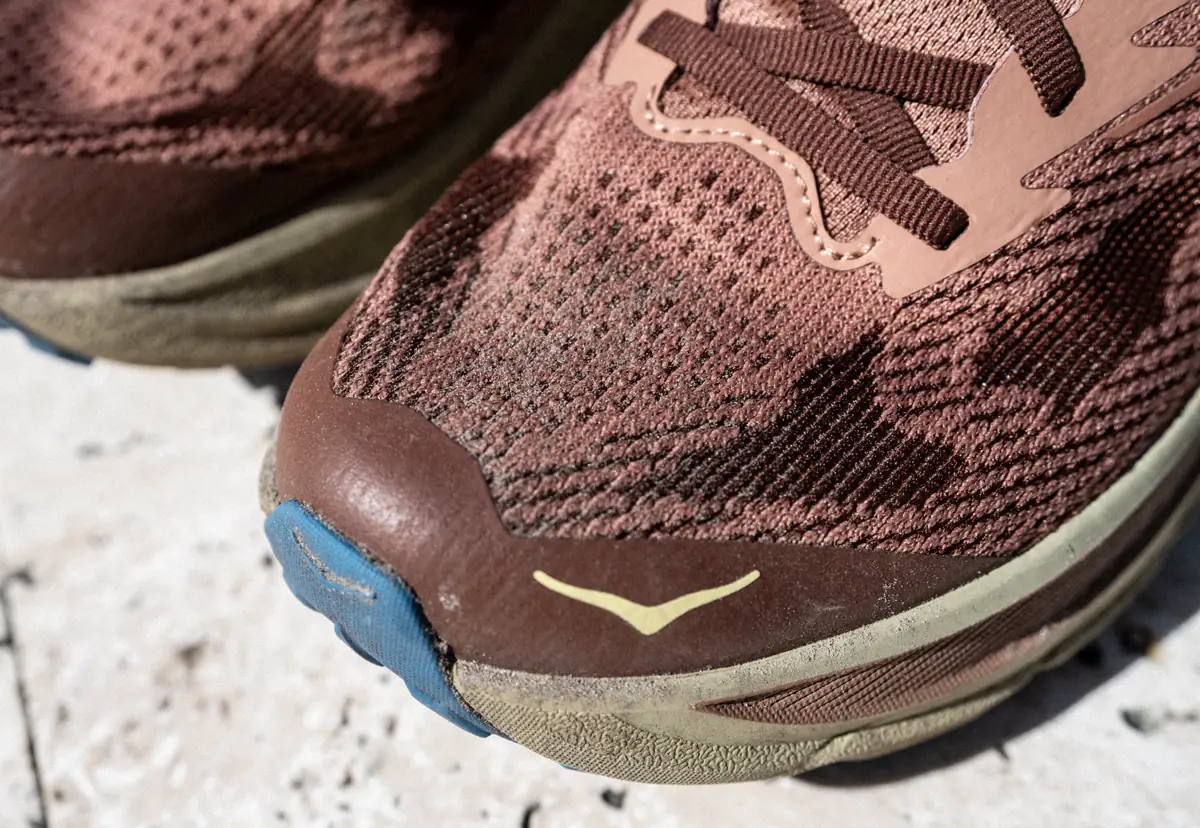
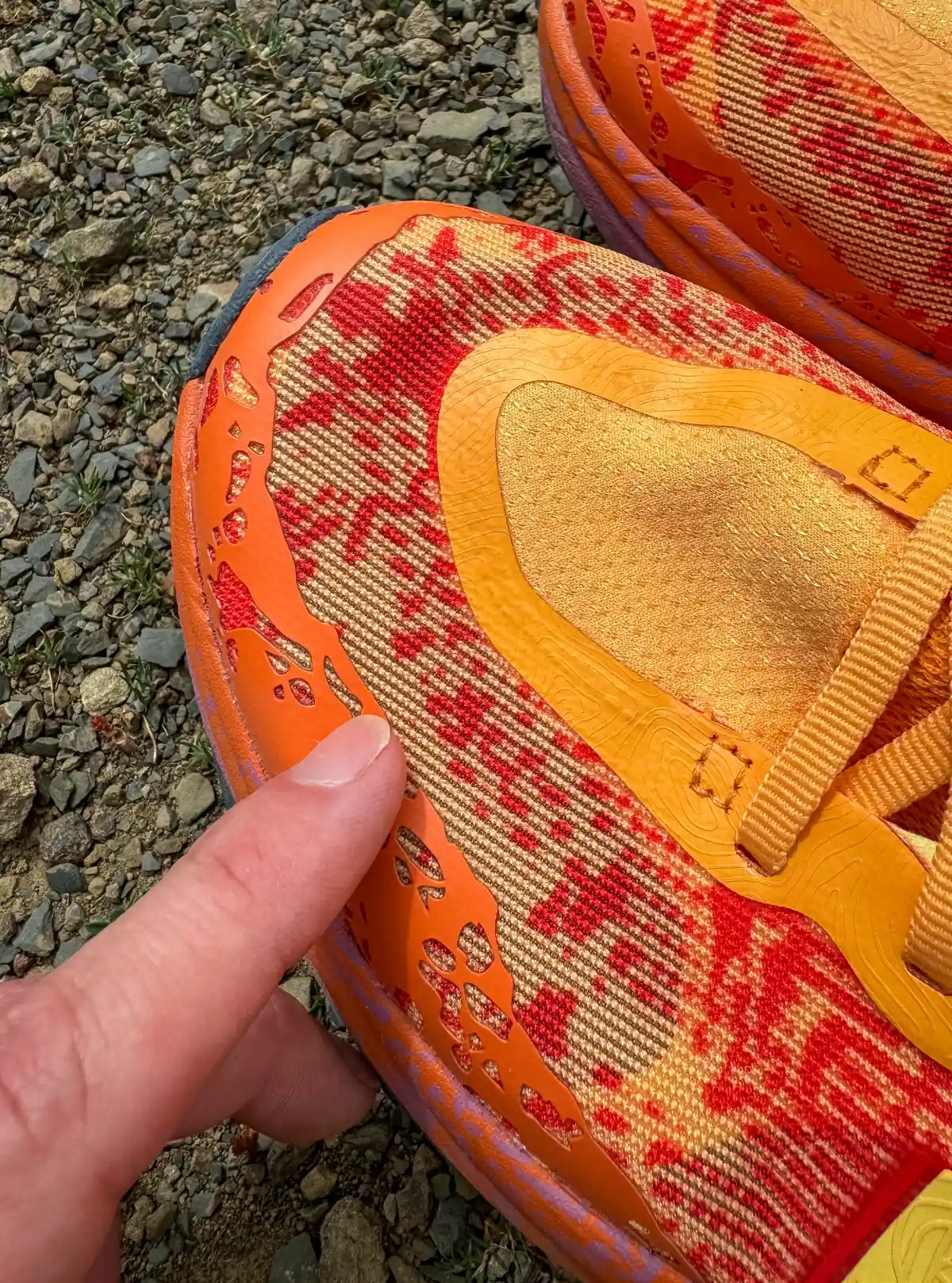
- The Speedgoat’s woven upper is snug and supportive, but it does run warm in hot weather.
- The Challenger’s mesh upper is more breathable and plusher around the ankle, making it a better choice for warmer conditions or all-day wear.
Which is better for you?
Here’s a quick breakdown to help decide:
| If you want… | Go for… |
|---|---|
| A true mountain shoe with serious grip and precision | Speedgoat 6 |
| A hybrid shoe for daily miles, roads, and light trails | Challenger 8 |
| Better breathability and comfort on casual runs | Challenger 8 |
| Rock-solid traction on wet or technical terrain | Speedgoat 6 |
| More responsive ride for ultra-distance racing | Speedgoat 6 |
| A trail shoe that doubles for errands or dog walks | Challenger 8 |
| Wider forefoot and softer feel underfoot | Challenger 8 |
My verdict
These are both excellent trail shoes, but built for different jobs.
If I’m heading into the mountains or racing on technical trails, I’m reaching for the Speedgoat 6 every time. The grip, midsole resilience, and precision fit make it one of my favorite long-distance trail racing shoes out there.
But for all those in-between days, mixed terrain runs, recovery sessions, walks with Seb and our border collie, I keep reaching for the Challenger 8.
It’s one of the most comfortable and versatile shoes in my rotation, and I don’t need to think about the terrain before lacing them up.
If you’re not planning on hitting serious mountain trails regularly, the Challenger 8 may be all the trail shoe you need. But if your routes are rugged and technical, the Speedgoat 6 is well worth the investment too.


